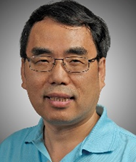| Biography | |
|---|---|
 Prof. Zenghu Chang University of Central Florida, USA |
|
| Title: Novel high power infrared lasers for attosecond science | |
| Abstract: The advent of Ti:Sapphire lasers in the 1990s leads to the first demonstration for attosecond XUV pulses in 2001. In recent years, carrier-envelope phase stabilized lasers at 1.6 to 2.1 micron based on Optical Parametric Chirped Pulse Amplification pushed attosecond light sources to the “water window” X-rays, which enabled real-time observation of electron and nuclear motion in molecules containing carbon, nitrogen and oxygen. A more efficient way of producing long-wavelength, high energy, femtosecond pulses is through Chirped Pulse Amplification. Very recently, we have demonstrated the generation of 2.3 mJ, 88 fs, 2.5 um laser pulses from a Chirped Pulse Amplifier employing Cr2+:ZnSe crystals as the active gain media. Our results show the highest peak power at 2.5 um with a 1 kHz repetition rate. Such lasers will be powerful sources for studying strong field physics and extending high harmonic generation towards the keV X-ray region. | |
| Biography: Zenghu Chang is a University Trustee Chair, Pegasus and Distinguished Professor at the University of Central Florida, where he directs the Institute for the Frontier of Attosecond Science and Technology. He is a fellow of the American Physical Society and Optical Society of America. Chang graduated from Xi’an Jiao-tong University in 1982. He then earned a doctorate at the Xi’an Institute of Optics and Precision Mechanics, Chinese Academy of Sciences, in 1988. He joined the physics faculty at Kansas State University in 2001, and moved to the University of Central Florida in Orlando in 2010. His notable contributions include the demonstration of high-order harmonic cutoff extension using long wavelength driving lasers in 2001. His group generated the 53-as X-ray pulses reaching the carbon K-edge. He is the author of the book “Fundamentals of Attosecond Optics.”
| |
